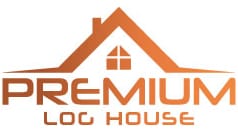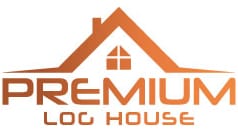Introduction to Log Cabin Flooring
When it comes to designing the interior of a log cabin, the flooring plays a significant role in setting the tone and enhancing the aesthetic appeal of the space. From the rustic charm of hardwood to the practical benefits of laminate, there is a wide array of log cabin flooring options to suit different needs and preferences.
What is Log Cabin Flooring
Log cabin flooring refers to the material that is used to cover the floor of a log cabin. This can comprise a variety of materials, each with its unique characteristics and aesthetic appeal. The type of flooring chosen can greatly influence the overall look and feel of the cabin, making it an important aspect of the cabin’s design and functionality.
The flooring options range from traditional choices like hardwood and tile to modern, more cost-effective alternatives such as vinyl or laminate. Each option has its pros and cons, making it essential to consider your specific needs, budget, and the cabin’s purpose before making a decision.
Why Flooring is Important for Log Cabins
The importance of flooring in a log cabin extends beyond its visual appeal. It significantly contributes to the cabin’s comfort, durability, and maintenance needs. Here are a few reasons why choosing the right flooring is essential:
- Comfort and Insulation: Flooring can impact the cabin’s comfort, especially in colder climates. Certain flooring types offer better insulation, contributing to a cozy and warm cabin interior.
- Durability: Given the unique environment of log cabins, the flooring needs to withstand different elements, including moisture and temperature changes. Some flooring types are more durable and resistant to these elements than others.
- Maintenance: Depending on the materials used, some floors are easier to clean and maintain than others. This factor is crucial for those seeking a low-maintenance option.
- Aesthetics: The right flooring can enhance the rustic charm of a log cabin, complementing the wooden walls and contributing to a cozy and inviting atmosphere.
In the subsequent sections of this article, we will explore various log cabin flooring options and their advantages and disadvantages. This information will help you make an informed decision about the best flooring for your log cabin, whether it’s a cozy retreat, a garden log office, or a garden log cabin.
Types of Log Cabin Flooring
When it comes to selecting the right flooring for your log cabin, it’s critical to understand the different options available and their respective pros and cons. Here are some of the most popular log cabin flooring options.
Hardwood Flooring
Hardwood flooring is a classic choice for log cabins, offering a warm and timeless aesthetic that matches the rustic charm of the cabin. It typically comes in a variety of woods such as oak, maple, and cherry, which can be selected to match your cabin’s interior.
Pros and Cons of Hardwood Flooring
Pros:
- Offers a warm, natural aesthetic that complements the log cabin
- Durable and long-lasting
- Can be refinished multiple times
Cons:
- Can be expensive
- Requires regular maintenance to keep it in good condition
- Can be prone to scratching and denting
Laminate Flooring
Laminate flooring is a cost-effective alternative to hardwood. It consists of a photographic layer that replicates the look of natural wood, making it a versatile choice for log cabins.
Pros and Cons of Laminate Flooring
Pros:
- More affordable than hardwood
- Resistant to scratches and moisture
- Easy to install and maintain
Cons:
- Does not possess the same warmth and depth as real wood
- Cannot be refinished like hardwood
- Can wear out faster than hardwood flooring
Tile Flooring
Tile flooring is a durable and waterproof option that is ideal for areas in the cabin that may be exposed to moisture, such as the kitchen or bathroom.
Pros and Cons of Tile Flooring
Pros:
- Highly durable and water-resistant
- Available in a variety of designs and styles
- Easy to clean and maintain
Cons:
- Can be cold underfoot
- Hard surface can be uncomfortable to stand on for long periods
- Installation can be complex and time-consuming
Carpet Flooring
Carpet flooring provides a cosy and comfortable option for bedrooms and living areas. It offers excellent insulation, helping to keep the cabin warm during the colder months.
Pros and Cons of Carpet Flooring
Pros:
- Provides warmth and comfort underfoot
- Excellent insulating properties
- Available in a variety of colours and styles
Cons:
- Can be difficult to clean and maintain
- Prone to staining and wear
- Not suitable for areas exposed to moisture
Vinyl Flooring
Vinyl flooring is a cost-effective and versatile option that can replicate the look of natural materials such as wood and stone. It is also water-resistant, making it suitable for kitchens and bathrooms.
Pros and Cons of Vinyl Flooring
Pros:
- Affordable and versatile
- Water-resistant and easy to clean
- Soft and comfortable underfoot
Cons:
- Not as durable as other flooring options
- Can be prone to scratching and tearing
- Lower resale value compared to hardwood or tile flooring
Each flooring type offers its unique set of benefits and drawbacks. To make the best choice for your log cabin, consider factors such as durability, maintenance, comfort, aesthetics, and cost. For more tips on how to enhance your log cabin, check out our articles on log cabin design ideas and log house maintenance tips.
Factors to Consider in Choosing Flooring
Determining the ideal flooring for your log cabin requires careful consideration of several factors. These aspects play a significant part in how well your chosen log cabin flooring options will meet your needs and expectations.
Durability and Maintenance
The durability of the flooring material is a crucial factor to consider. Given that log cabins are often used as holiday homes or garden offices, the flooring should be able to withstand regular use, potential moisture, and fluctuating temperatures. Hardwood and tile floors are renowned for their longevity, but they also require regular maintenance to keep them in good condition. On the other hand, laminate and vinyl flooring are less demanding in terms of upkeep. For more insights on maintaining your cabin floor, check out our article on log house maintenance tips.
Comfort and Insulation
When it comes to comfort and warmth, not all flooring options are created equal. Carpeting, for instance, provides a warm and cosy feel underfoot, making it a popular choice for bedrooms. However, for areas prone to moisture such as kitchens and bathrooms, tiles may be a more practical solution. The insulation properties of the flooring can also impact the cabin’s energy efficiency. You can learn more about this in our article on insulating log cabins.
Aesthetics and Style
The look and feel of the flooring can significantly influence the overall aesthetic of your log cabin. Hardwood floors, for example, can add a classic and luxurious touch to the cabin. In contrast, laminate or vinyl flooring offers a wide range of styles and designs, allowing for more flexibility in matching the cabin’s interior décor. For more design ideas, take a look at our log cabin interior design article.
Cost and Installation
Lastly, the cost of the flooring material and its installation should align with your budget. Keep in mind that while some flooring options may be cheaper to install, they may require more maintenance in the long run, incurring additional costs. Alternatively, pricier options, such as hardwood, could offer greater durability and longevity, proving to be cost-effective over time. Our article on the cost of building a log house provides further information on budgeting for a log cabin build.
When considering these factors, it’s essential to strike a balance between practicality and personal preference. The best flooring option for your log cabin should not only be durable and easy to maintain, but also comfortable, insulating, aesthetically pleasing, and within your budget.
Tips for Maintaining Your Log Cabin Floor
Choosing the right log cabin flooring options is just the first step. This must be followed by regular maintenance and proper care to ensure the longevity and aesthetics of your floors. Here are some tips on cleaning, dealing with damages, and considering when it’s time to replace your flooring.
Cleaning and Maintenance Practices
Your log cabin flooring, whether it’s hardwood, laminate, or tile, needs regular cleaning to maintain its appeal and durability. Use a soft broom or vacuum for daily cleaning to remove dust and debris. For deeper cleaning, use products suitable for your specific flooring type. Avoid using excessive water, especially on hardwood and laminate floors, as it can cause warping or staining. For more detailed cleaning and maintenance tips, see our article on log house maintenance tips.
Dealing with Scratches and Damages
No matter the type of flooring, scratches and damages are inevitable. For minor scratches on hardwood floors, you can often use a touch-up kit. Deep scratches and gouges may require sanding and refinishing. In the case of laminate, tile, or vinyl flooring, you may need to replace the damaged plank or tile. Remember to always have a few extra planks or tiles from your original installation for this purpose. For more information on repairing damages, consult our article on repairing log cabins.
Longevity and Replacement
The longevity of your log cabin flooring depends on the material and how well it is maintained. Hardwood floors can last for decades with proper care and regular refinishing. On the other hand, laminate, vinyl, and carpet floors have a shorter lifespan and may require replacement after 10-20 years. When considering replacement, think about the cost, time, and impact on your log cabin. For insightful information on the longevity of log houses and their components, read our piece on log house longevity.
Maintaining your log cabin floor is crucial to ensure a pleasant and comfortable living environment. With proper care and attention, your flooring can remain attractive and functional for many years, enhancing the overall charm of your log cabin retreat.

